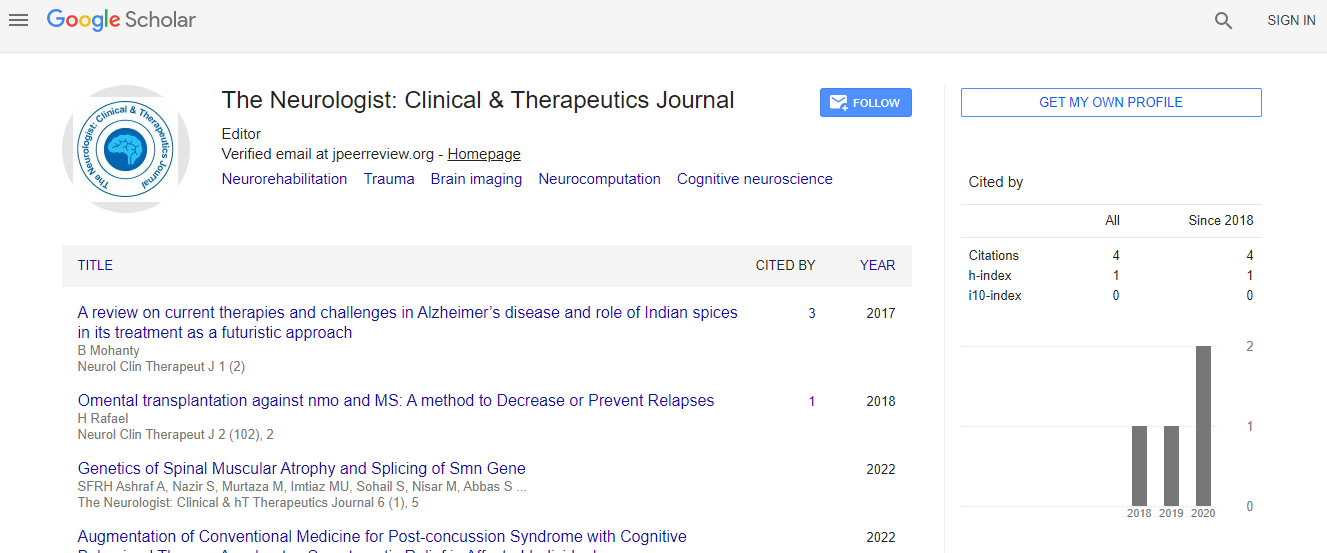Molecular Mechanisms to Treatment Advancements in Neurodegenerative Disease Research
*Corresponding Author: Tumby Barer, Institute of System Motor Science, Center of Brain, Behavior and Metabolism, University of Lübeck, Germany, Email: tumbybarer@gmail.comReceived Date: Sep 03, 2024 / Published Date: Sep 30, 2024
Citation: Tumby B (2024) Molecular Mechanisms to Treatment Advancements inNeurodegenerative Disease Research. Neurol Clin Therapeut J 8: 223.
Copyright: © 2024 Tumby B. This is an open-access article distributed under theterms of the Creative Commons Attribution License, which permits unrestricteduse, distribution, and reproduction in any medium, provided the original author andsource are credited.
Abstract
Neurodegenerative diseases, such as Alzheimer’s, Parkinson’s, and Huntington’s disease, are characterized by the progressive loss of neuronal function and structure. This review focuses on recent advancements in understanding the molecular mechanisms underlying these diseases and explores emerging therapeutic strategies. We discuss the roles of protein misfiling, mitochondrial dysfunction, oxidative stress, and neuroinflammation in disease progression. Furthermore, we highlight novel treatment approaches, including gene therapy, small molecule inhibitors, and immunotherapy, that aim to target these molecular pathways. By integrating the latest research findings, this review provides a comprehensive overview of the current landscape in neurodegenerative disease research, emphasizing the transition from molecular insights to potential therapeutic applications.

 Spanish
Spanish  Chinese
Chinese  Russian
Russian  German
German  French
French  Japanese
Japanese  Portuguese
Portuguese  Hindi
Hindi 